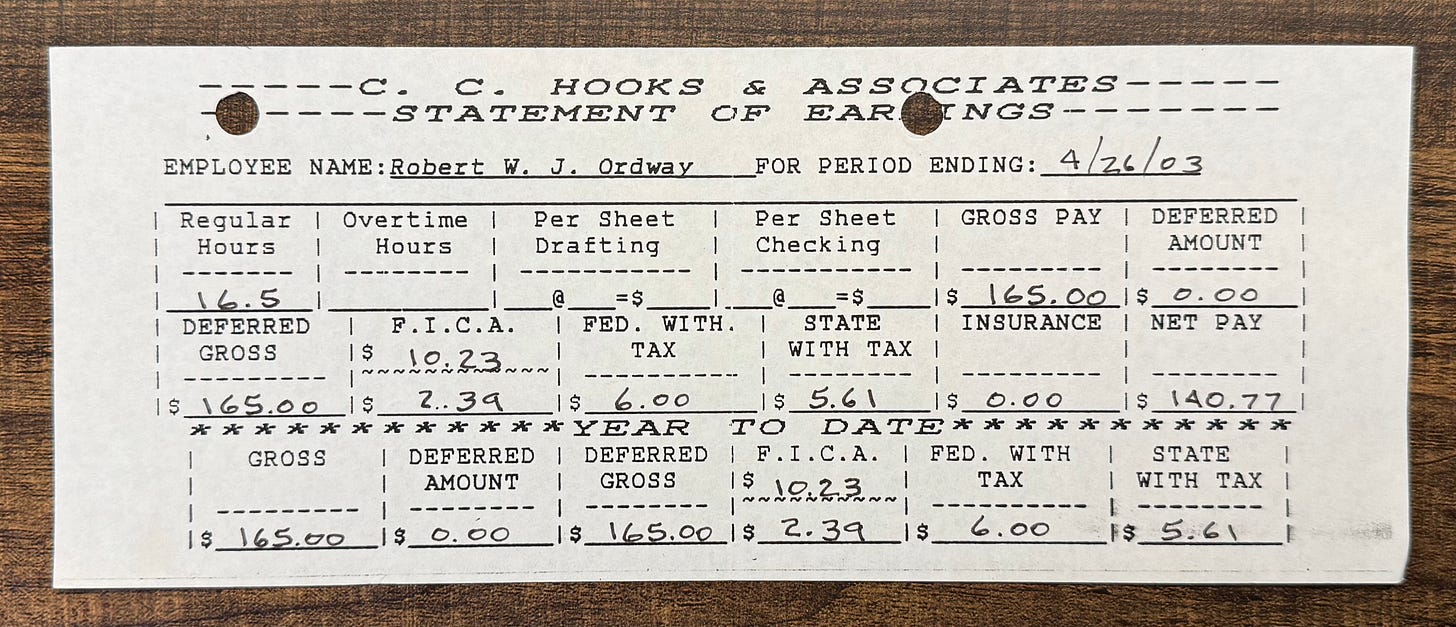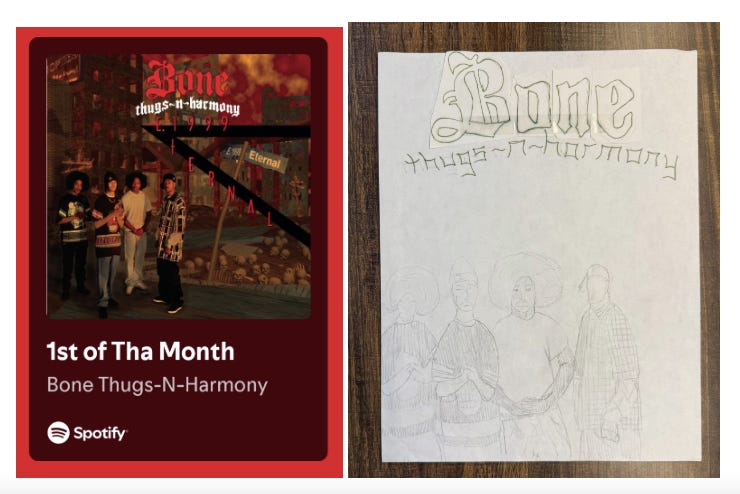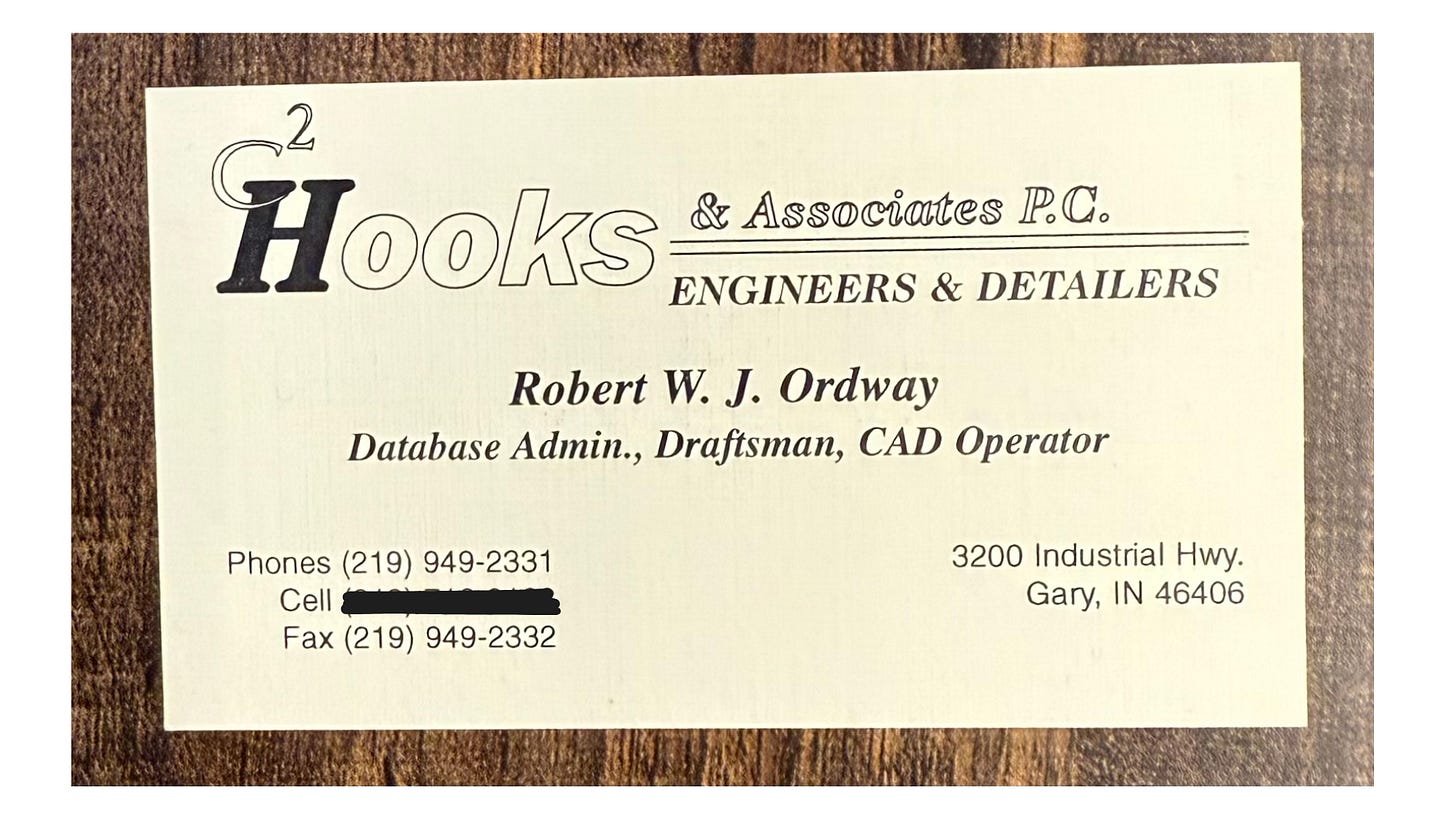Drivin’ For Dee
Wake up, wake up, it's the first of the month
In my piece, Midnight McDonalds, I wrote about encounters with the homeless in Washington, DC, while unemployed. It triggered many memories from working in Gary, Indiana, and the people I met. After a quick search on my iCloud, I came across a treasure trove of Word docs from 2005-2008, which were actually blog posts scraped from my old MySpace account. Today, I’m pulling one story from September 2006 about a man I picked up off the street.
I worked on Gary's west side (see the video of C.C. Hooks & Associates below) intermittently from 2003 to 2015, and my employer, (the late) Mr. Hooks, issued manual paychecks. He was averse to the fees banks charged small businesses for direct deposit. It was often hard to get to a bank before or after work (this is before virtual deposits), so I decided to venture off to the closest Chase Bank during since I needed to eat anyway. Google Maps was in its infancy, leading me to a branch at 11th & Roosevelt Street.
My employer, C.C. Hooks & Associates - video taken 2006
The parking lot on the backside of the building was filled, which was odd, so I just parked down the street. As soon as I opened the door, the place was clearly packed with people waiting in line. As a finance major, I thought this might be a run on the bank, but I also knew Chase was “too big to fail.” Even though the bank had legit 20 bulletproof service windows, only one teller was working that day. After I walked in, everyone stopped talking and stared at me. I was the only white person in the joint.
I was already in a mood, burning up my lunch hour, so I stomped out, mumbling, “I don’t have time for this. I’m going downtown.” That’s when a man followed me outside and asked if he could get a ride to the other location. I didn’t even blink before saying, “Yeah, sure,” without realizing what I had committed to. After he jumped into my truck, he introduced himself as Dee, a 55-year-old retired Black man. He then told me he was disabled after getting hit by a semi-truck and was living off of social security disability. I thought it was for another reason: he had a tumor the size of a tennis ball on the back of his neck, pushing his head forward.
“So what was that back there? Why are there so many people at the bank today?,” I asked.
Dee just laughed, “Man, don’t you know?!? It’s the first of the month!”
To me, “First of the Month” was merely a song from an album by Bone Thugs-N-Harmony, a rap artist I was introduced to in fifth grade by friends. Their older siblings and cousins always kept them far ahead of me on anything pop culture-related as times changed in our multi-ethnic community. The only other recollection I had of this phrase was when Chris Rock made fun of the song as part of a standup comedy routine in 1996.
I didn’t see the people at the bank as welfare recipients as they were mostly elderly. Dee noted that they were cashing Social Security checks like him, so I felt vindicated that I had never bought into the stereotype the phrase implied.
We arrived downtown at the Old Gary Bank Building at 5th and Broadway. Lo and behold, after walking in, the line was even longer! I’d worked in the city for over three years by this point and had never seen such activity. Next thing you know, Dee and I are traveling another two miles east to the Miller section of the city. The line was nowhere near as long, so I deposited my check but when Dee was finally up, he learned that they did not have bank checks (essentially cashier’s checks). He needed those to pay his NIPSCO (energy) bill.
On our way back, I told him part of this noon-hour exercise was grabbing lunch, so I offered to take him to McDonalds at 5th & Grant since it was on the way back to the office.
Now I have to tell a few sub-stories about this place. Gary is a food desert, and at the time, there weren’t even many fast food options, but this McDonalds was always on fire. I don’t think I have ever seen people hustle so hard for so long – and my order was always right. A few months before meeting Dee, I must have eaten lunch or dinner there four days a week over the summer. A few years later, while dining in, I met Richard Hatcher, the nation’s first Black Mayor of a major city. Our conversation was brief, but I told him how disappointed I was to spend my whole life hearing how bad Gary was, yet my experience with the people couldn’t have been more welcoming. We departed, agreeing that while Gary wasn’t likely to return to the glory days, there would be a lot of opportunity to move the community forward. Sadly, I lost the picture I took with him while transitioning between phones – stupid HTC Touch.
On another occasion, I saw a newspaper sitting at one of the tables. It was called the Gary Crusader. As I flipped through the paper, I noticed all the stories were Afrocentric and positive. It was the opposite of anything I had ever seen written about Gary in a newspaper, full of real stories about real people at the local level and some history splashed in. As I left the paper behind for someone else to enjoy, I only had one question: Why doesn’t anyone else know about this stuff? Today, I recommend Capitol B Gary. (Thanks, William.) This would later inspire my 2015 op-ed about the city.
Okay, back to Dee. Per usual, the drive-through line at this McDs wrapped around the building so we went inside. “So what can I get?” he asked. “You pick, I pay,” I responded. “Really? Are you sure?” he responded. After a few back-and-forths for confirmation, it became clear this man was very poor. I forced him to get the Big Mac meal and supersize it, but I still picked off the dollar menu.
After we sat down, the conversation ran the gamut. We talked about the City of Gary and its history of politics, corruption, racism, poverty, and steel, among other topics. It was Gary’s 100th anniversary, and I’d recently finished Gary’s First Hundred Years after seeing it displayed at Barnes & Noble. To say I was eager to talk to anyone about what I learned was an understatement. In between the topics, he kept thanking me for lunch. It must have been five or six times. At first, I was annoyed, then realized he was filled with gratitude.
Dee asked me why I was so nice, how I became so productive, and how I had such a good head on my shoulders. To me, it was simple. My parents raised me to say please and thank you, show up on time, open doors for people, and treat them fairly. Values are free. “You know, they also told me not to pick up strangers,” as I smiled. “Guess I didn’t follow all of their advice.” then I shrugged. He laughed. That’s when we started rapping about Christianity.
“For a split second, I thought you could be a scammer looking to carjack me. After my conversion, I learned to accept the fate of my decisions and acknowledged there is a greater power out there who is ultimately in control,” I said.
He said, “Yeah, I didn’t think for a split second you'd say yes to giving me a ride, much less driving me all across the city and buying lunch.”
After we finished up, he asked that I drop him off at the downtown Chase instead of where I picked him up. This indicated to me that he didn’t have a car. The line was still there, but after all, he had bills to pay.
“Tell everyone you have a white friend named Robert who is going to run for mayor one day.” I smiled, and he laughed. (Mind you, I was completely apolitical throughout college and wouldn't have know how to run for office if my life depended on it.) After getting out of the truck, he asked me for fifty cents, but I spotted him a dollar for good measure. Dee said he hoped to cross my path again. I agreed with a hearty handshake.
When I returned to the office, Mr. Hooks asked, “Where have you been?!?” I was unusually gone for about an hour and a half, but I responded, “Okay, you’re not going to believe this, but I was hanging out with a disabled, old Black man, chauffeuring him all over the city. looking for a bank” After telling an abridged version of my story, he said he expected no different of me in such a situation.
After that day, I started depositing my checks at that branch whenever I could, hoping to run into Dee again, but it never happened. Instead, I met other people, and was told on more than one occasion that I was the only white person they had ever seen in the place. One gal even started offering me directions, thinking I’d come in lost.
After all, the location wasn’t exactly on the main drag of 4th and 5th Ave, where whites merely pass through the city on their way to their employment in and around the steel industry. A few years ago, while visiting home from D.C., I drove around my beloved Northwest Indiana to see how things have changed since my departure. The building had clearly been abandoned several years earlier, but the memories I have are still intact. When I think of the “First of the Month,” I’m reminded of Dee, just another guy trying to make it one day at a time and one of the coolest cats I’ve ever met.





Interesting read. There’s a lot of great Gary (and the region, generally) history that Hoosiers are simply unaware of.
Great article. I grew up in The Region and participated in sporting events all around Gary before later passing through going to and from Chicago. You’ve captured it well here. I’d love Gary to rebound to the glittering town sang about in The Music Man.